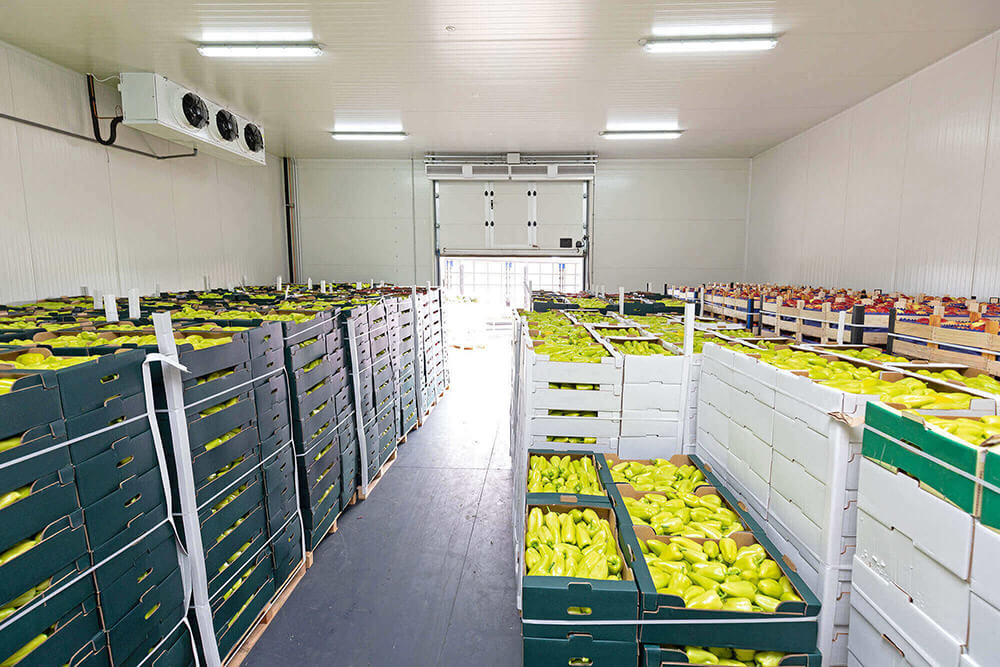
BLOG
The growth of e-commerce and most recently, the COVID-19 Pandemic, have contributed to an increase in demand for industrial properties-especially warehouses.
Among the many subsectors in the industrial sector, an asset class which has been slowly growing attention however, is that of cold storage warehouses.

According to YY Lau, Country head of JLL Property Services (Malaysia) Sdn Bhd, it is a type of warehouse that comes with temperature control, hence allowing the storage of items requiring a specific temperature and environment. It is therefore used by sectors including Food & Beverage (F&B), medical and pharmaceutical, in addition to some items in the electrical and electronic (E& E) sector such as semiconductors, for which this type of environment is also needed.
Siva Shanker, CEO of Rahim & Co. International Sdn.Bhd, Real Estate Agency, says that cold storage warehouses are popular because there will always be food and other items that need to be kept in a temperature- controlled environment throughout their transportation from one point to another.
According to Executive Chairman of REIT Managers Sdn Bhd D.S LaBrooy, the primary drivers of cold storage warehouses include closeness to population growth, changing consumer preferences and spending, as well as the growing demand for perishable goods.
With consumers having becoming increasingly aware of health and wellness and the effect of food nutrients (especially protein) on their physical growth, this has led to a change in the consumption pattern of perishable foods including dairy products, fruits, vegetables and animal-based products which are rich in protein, states LaBrooy.
Under what temperature ranges should different types of foods be stored?
According to LaBrooy, different temperature levels are required for different sectors. As examples, chilled meats, dairy products and vegetables should be stored between 0 to -5”C, while frozen foods need to be kept at a range of -18 to 28” C.
What will the overall Demand for cold storage warehouses look like?

Siva states there will be continuous demand for such facilities because the cost of infrastructure is very high, with it being necessary to build a cold room and not just a simple warehouse.
In order to avoid the costs associated with operating these facilities according to LaBrooy, most companies in need of refrigeration storage services would resort to outsourcing to industry operators.
Although the cost tends to vary based on the specifications of the warehouse, it may reach about 3 times the cost of a typical warehouse. In order to justify the comparatively high cost, a market study could be conducted by investors in order to analyze the Demand and recommend a suitable product or service in order to gain the best return on investment (ROI), says Lau.
In addition, LaBrooy mentions that the annual operating cost for cold chain businesses is higher per cubic foot, with the energy expense on its own accounting for 30% of total expenses. Hence with this industry being one that is energy intensive, the capital investment cost for cold chain providers tends to rise as a result of investments in back-up energy systems.
Another barrier to entry is high real-estate cost, since buying land and constructing a fully integrated cold storage facility with a storage capacity of 1 million cubic feet, requires a high capital investment, says LaBrooy. The location of the project is also a significant factor especially with cooling units being immobile. Acquiring enough land for building a cold storage facility, is surely a difficult task for small players.
Based on Siva’s opinion, demand for this service is stable with the quantities of both food and medicine being predictable. Hence according to, LaBrooy, this warehouse type is rarely built on assumptions, with the frozen foods industry benefiting from being inelastic since the demand for foods and pharmaceuticals tends to remain constant regardless of the economic condition of the country in question. As a result of the steady demand for frozen foods witnessed through various economic cycles, the potential risks of owning and operating cold storage facilities are reduced.
Siva stresses however, that the demand for cold storage warehouses could potentially sky rocket from the COVID-19 vaccine, with there being no such rooms in Malaysia for storing these devices used to combat the virus.
Investing in this segment
In addition to LaBrooy’s view highlighted earlier that most companies requiring refrigeration storage services will resort to outsourcing from industry operators to avoid the huge costs related to their operation, Lau stresses that cold storage warehouses are leased since they are usually a part of the entire supply chain of cold chain logistics and that other support services will be required by these industries, such as the specialized transport of cold storage products.
She also says that large scale food producers in Nestle and KFC and large-scale hypermarket chains such as Tesco and Aeon, are among the industries which find it more sustainable having their own cold chain warehouses, which will not only build to their own specifications but set up their own cold chain logistics arm as well.
Hence, the industry is being evenly split between those with their own cold chain warehouses and those who resort to their outsourcing, stresses LaBrooy.
According to Siva, developers and investors will most of the time opt towards building a normal warehouse before putting in the infrastructure for developing a cold room to be rented out to third party (3PL) Logistics players – the key benefit for investing in this sector being that the rent per square foot is higher due to the high upfront capital (the rental of a cold storage warehouse being double or even more of that for a conventional warehouse, depending on infrastructure).
He states that there are basically 2 scenarios: The 1st is that of a conventional warehouse being built by a developer who then rents it out to cold room operators who add the infrastructure themselves, Since the infrastructure cost will be borne by the operator, the rental cost will remain at the normal price. As for the 2nd scenario which involves the developer building to suit the specifications of a specific industry requiring a cold room, the rent would be higher depending on the infrastructure cost which was incurred by the developer.
This view is also supported by LaBrooy who says there is no disadvantage to invest in this sector, with this type of asset providing a higher (ROI) than the traditional warehouse.
What possible scenarios can be anticipated for the cold chain industry and cold chain warehousing?
LaBrooy says that the pandemic has had a positive impact on the cold chain industry, resulting in demand for cold chain warehousing, the harsh effects that trade restrictions have inflicted on the supply chain of every industry, has led to food manufacturers placing heavy emphasis on the storage of food products in order to increase their shelf-life – something which is expected to boost the cold storage market.
Lau expects the increasing demand for cold storage warehouses to remain on a long- term basis since the sectors boosting it can be deemed sustainable, especially the F&B, medical and pharmaceutical sectors among others. She states that due to the current market uncertainties being witnessed, the level of increase may vary in the future.
According to Siva, demand is expected to remain the same and will grow at a slower rate, at the same level with the growth of the population. The only game-changer he says, would be the COVID-19 vaccines.
In addition to being a game changer for warehouses, these vaccines will have an impact on the entire logistics chain since they also need to be transported in -80”C vehicles, states Siva
Despite cold storage warehouses being in demand, they are not expected to become an asset class in their own right by property experts.
Industries which require cold chain logistics are considering setting up their own arm as opposed to either buying or leasing old storage warehouses from developers.